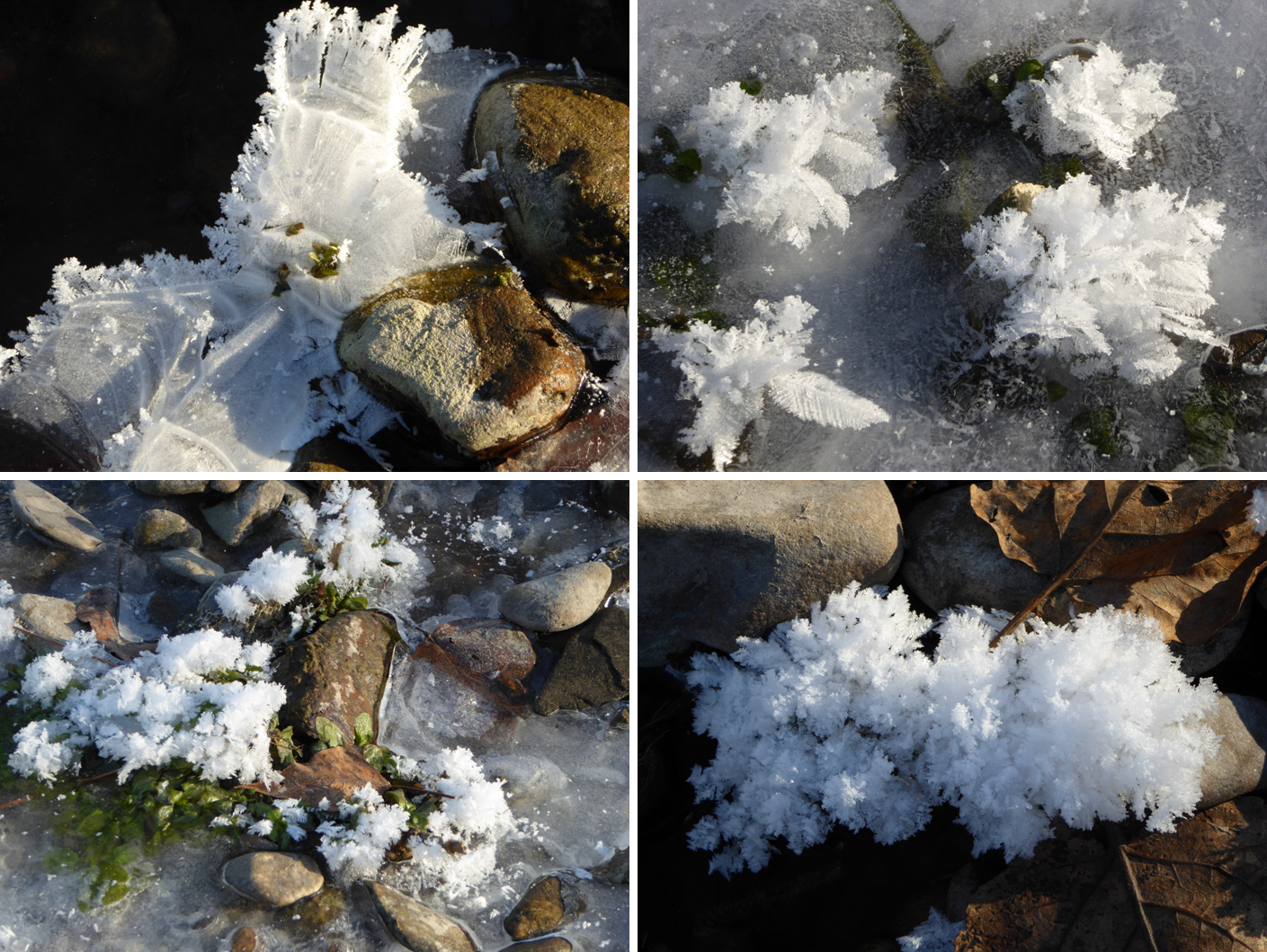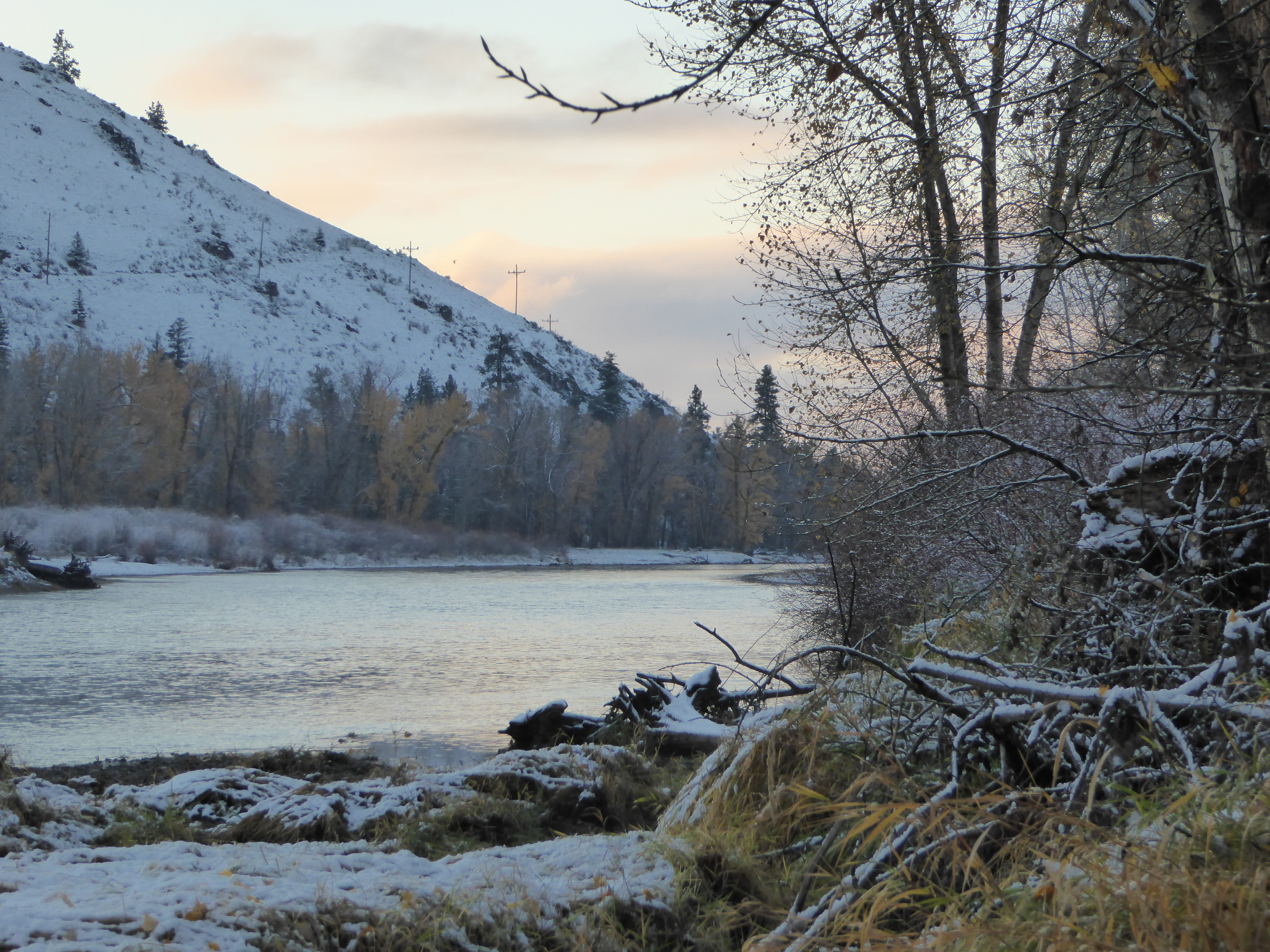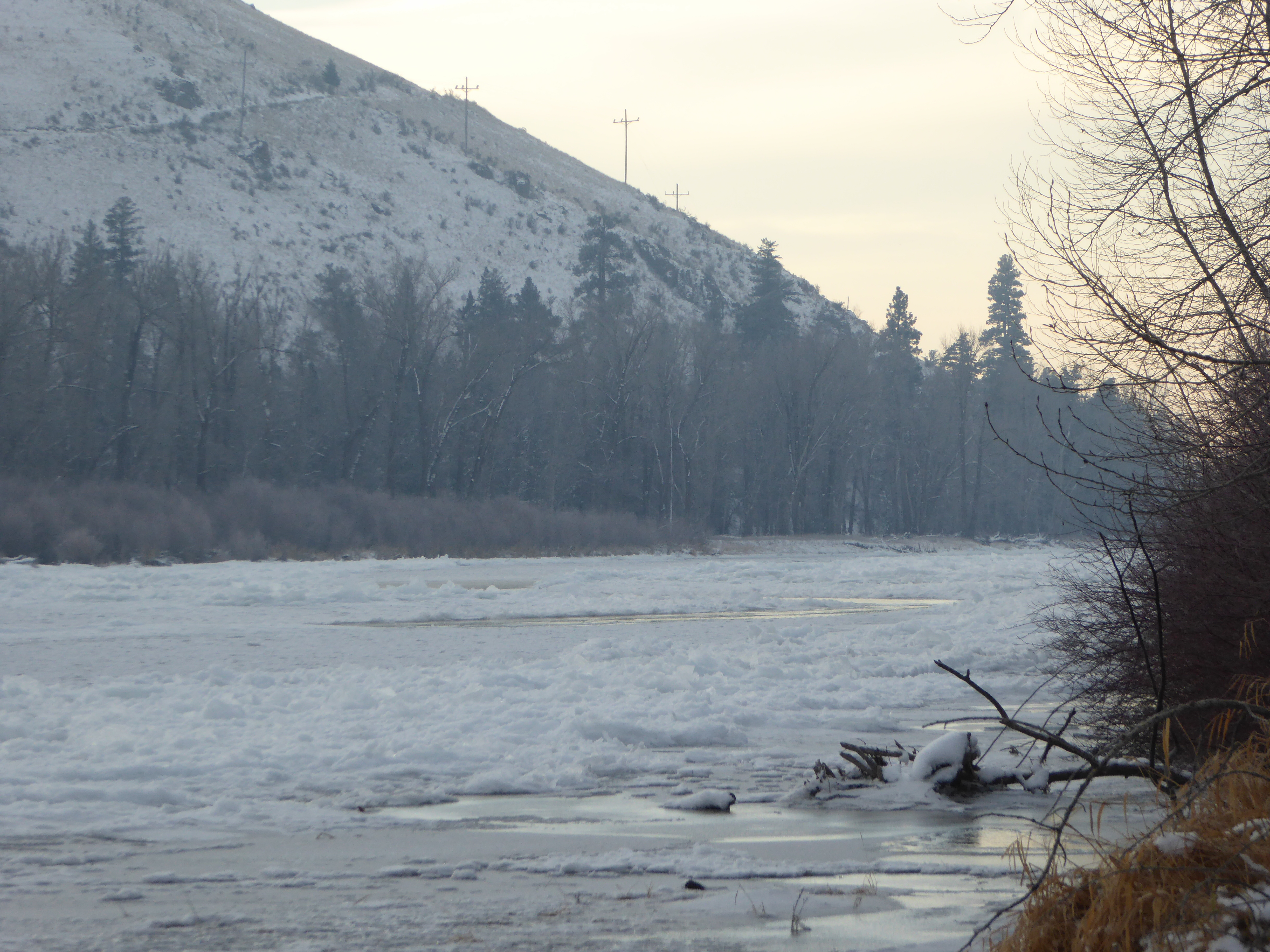 A November morning’s first light on the Bitterroot River reveals the season’s first snow.
A November morning’s first light on the Bitterroot River reveals the season’s first snow.
The saying in Montana is that if you don’t like the weather, just wait five minutes and it will change. While many think of this saying during the summer months when a mountain thunderstorm can drop the temperatures within minutes and send outdoor enthusiasts scampering for shelter, winter is really Montana’s most fickle season. You need not take my word for it – just let your fingers do a little google searching for “extreme temperature changes” and will you ultimately land on the following facts:
- The WORLD’S record for temperature change within a 24 hour period was recorded in 1972 in Loma, Montana, when the temperature rose 103 degrees, from – 54 degrees Fahrenheit to 49 degrees.
- The USA’S record for temperature change within a 12 hour period occurred at Fairfield, Montana, on December 14, 1924 when the temperature dropped 84 degrees from 63 degrees Fahrenheit to – 21 degrees.
- On January 11, 1980, the temperature at the Great Fall International Airport rose 47 degrees in 7 minutes, from -32 degrees Fahrenheit to 15 degrees. This is the most rapid temperature change ever recorded in the USA.
- Montana is the state with the most extreme temperature range, from -70 degrees at Roger’s Pass in 1954 to 117 degrees at Medicine Lake in 1937.
Clearly, Montana’s weather and temperatures are as dramatic as its landscapes. Changes in winter temperatures are seen and felt most acutely along Montana’s waterways, as the thermometer vacillates between freezing and thawing. By geological definition, rivers occupy the valley bottoms where the cold air sinks and temperatures can be 10’s of degrees colder than those just a few feet higher along the valley sides. Fog collects and freezes, coating the surrounding tress and bushes with hoarfrost that shimmers in the morning sun. Ice flowers bloom along the river’s edge with delicate crystal petals. Ice jams raise and lower the water level, leaving multiple layers of ice shelves along river shores. A river in winter is simply a magical place, a place where nature displays her power, her temperament, and her artistry.
The transition from November to December this year aptly illustrates Montana’s abrupt weather changes. November started out with warm late-autumn days and ended in frigid winter nights. Within just a few days, the Bitterroot River transformed from a lovely, snowy yet welcoming, channel of slowly moving water that could easily be forded by our horses, to a frozen ice way that spelled danger for any animal daring to tread on its surface, then back again to a fog enshrouded, ominous and cold, yet ice free river.
Winter’s impact can best be seen by watching a single place being transformed by changing temperatures. Here, for example, is a tree stump along the water’s edge, just below a gate from Dunrovin’s riparian area to the river. I visit this little beach often and many times have my camera in hand. Note the shape of the stump and the branch that juts outs over it.
Now follow that stump and branch in the two photos below. The order of these photos is December 12, 2015 above: November 6, 2015 the first one below; and December 3, 2015 the second one below. On December 12, the water level was low enough for me to get right up to the stump – which I could not do either on November 6th or December 3rd. Notice how the water level rose with the ice and almost totally encrusted the stump. Then, when the ice broke, the water level fell again, and this time it fell below what it had been on November 6th. Think about that for a moment. We had several significant snow events between November 6th and December 12th, yet the resulting water level is lower. My best guess is that much of the water in both the main stem of the river and in smaller tributaries is still frozen upstream!
Rivers, aren’t they fascinating? We are so very lucky to be living along side this natural and mysterious phenomenon known affectionately as the Bitterroot River.




